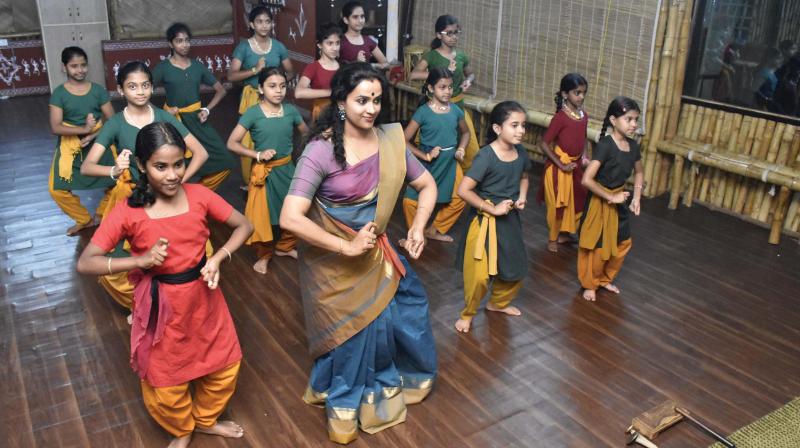Teaching millennials the intricacies of nava rasa'

Bengaluru: However we may deny it, but traditional dance forms are taking a back seat. Inculcating a love for it is important if we wish for the future generations to experience its beauty.
Keeping this thought in mind, Deepa Sangeeth, a 36-year-old city-based dancer, trained in Indian classical dance forms started a dance academy for the young. She called it 9 Expressions Performing Arts Academy, after the nine expressions of Rasa innate to traditional Indian classical dance forms.
“When we started out in 2009, the interest in traditions wasn’t at its peak. It was just when the social media phenomenon had hit and western dance forms like contemporary were becoming increasingly popular. I really wanted to pass them on, the forms I grew up with and loved and there was no better way to do it than teach,” she said.
Deepa is also adept in the martial art from Kalaripayattu and has been training since she was five. She also trains men and women in Kalaripayattu. “Kalaripayattu involves a lot more of you than just your body. In fact, every other dance form does…but, the dance form also teaches you self defence. It makes you strong, mentally and physically,” she said.
“It is originally almost five thousand years old and as most traditional performing arts go, the concepts are based around gods and goddesses and their legends. Now, we can’t expect a 6-year-old to know them but what we can do is simplify the back story and let them reimagine and reinvent it,” she said.
She also teaches Bhartanatyam, Kathak and Odissi. The Academy currently has over 160 students, who are between the ages of three-and-a-half to five.
“Apart from keeping the children connected to their roots, learning classical dance has several mental and physical benefits. If you hit the gym, you have a target of calorie burning to do, but here, you’re stimulating your senses and getting into shape without even realising it. And not to mention increase in flexibility!” she exclaimed.
Her older students include software engineers, homemakers and other professionals. “Men and women, even in their late 40’s, both come and to them, more than culture it is the experience. They are keen and they often find passion in dance and end up following it fulltime,” she said.
Born to an orthodox Indian family, Sangeeth’s love towards Indian dance forms was sown right from her early years. “My mother would always push me to do something creative. Not just be a doctor or engineer,” she recalls fondly, “I also found motivation in my younger sister Roopa, who is also a dancer. She does Kathak.”
Roopa Ravindran, also runs a fine arts academy called Eartha at Hebbal. Sangeeth is an alumni of Ravindra Kalashetra, Chennai where she trained under the guidance of her guru Professor Krishnamoorthy. She believes dance is a connection to the divine.
“It is all about the trance you’re in. It is like stepping out of your body into someone else. If I’m portraying Krishna on stage, I am him…it makes me forget my existence.”

